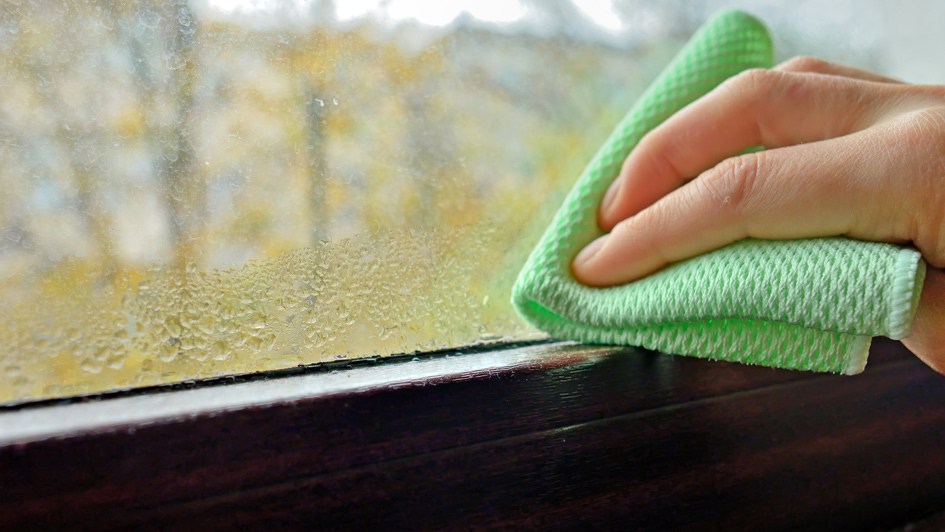
The windows in your home are a gateway to the outdoors, a way to let light in as you appreciate the view of your garden, yard or scenery. The last thing you need to see is a sweaty window coated in a layer of condensation.
Not only are windows plastered with condensation unappealing, they also can be a symptom of a more substantial air-quality issue in your home. Fortunately, there’s several things you can try to correct the problem.
What Causes Sweating along Windows
Condensation on the inside of windows is formed by the humid warm air throughout your home mixing with the colder surface of the windows. It’s especially prevalent around the winter when it’s much colder outside than it is inside your home.
Inside Moisture vs. In Between Panes
When discussing condensation, it’s necessary to recognize the difference between moisture on the inside of your windows versus moisture in between the windowpanes. One is an indoor air quality issue and the other is a window issue.
- Moisture within a window is produced from the warm moist air in your home collecting on the glass.
- Any moisture you see between windowpanes is produced when the window seal fails and moisture seeps between the two panes of glass, and by then the window needs to be repaired or replaced.
- Condensation on the inside of the windows isn’t a window issue and can instead be solved by fine-tuning the humidity in your home. Numerous things cause humidity inside a home, including showers, cooking, laundry or even breathing.
Why Condensation on Windows Could Mean an Issue
Even though you might presume condensation in your windows is a cosmetic issue, it may also be indicating your home has excess humidity. If this is in fact the case, water could also be accumulating on window frames, cold walls or other surfaces. Even a small film of water can encourage wood surfaces to mildew or rot over time, fostering the growth of mildew or mold.
How to Reduce Humidity Throughout Your Home
Thankfully there are numerous options for eliminating moisture from the air inside your home.
If you have a humidifier active within your home – whether it be a small unit or a whole-house humidifier – lower it further so the humidity inside your home goes down.
If you don’t have a humidifier going and your home’s humidity level is higher than you prefer, consider getting a dehumidifier. While humidifiers put moisture into your home so the air doesn’t dry out, a dehumidifier extracts excess moisture out of the air.
Smaller, portable dehumidifiers can remove the water from a single room. However, portable units require clearing water trays and usually service a somewhat limited area. A whole-house dehumidifier will remove moisture from your entire home.
Whole-house dehumidifier systems are regulated by a humidistat, which allows you to establish a humidity level just like you would choose a temperature via your thermostat. The unit will run immediately when the humidity level overtakes the set level. These systems work with your home’s HVAC system, so you should contact qualified professionals for whole-house dehumidifier installation Marshalltown.
Additional Ways to Lower Condensation on Windows
- Exhaust fans. Putting in exhaust fans around humidity hotspots such as the bathroom, laundry room or above the stove can help by pulling the warm, humid air from these spaces out of your home before it can raise the humidity level across your home.
- Ceiling fans. Running ceiling fans can also keep air swirling throughout the home so humid air doesn’t get caught up in one place.
- Open window treatments. Throwing open the blinds or drapes can reduce condensation by stopping the warm air from being stuck against the windowpane.
By decreasing humidity in your home and moving air throughout your home, you can enjoy clear, moisture-free windows even in the winter.
